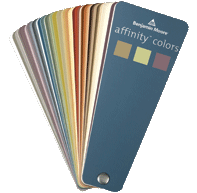PRODUCT LINES
Disclaimer: Some of the links in this article are affiliate links, meaning, at no additional cost to you, I will earn from qualifying purchases as an Amazon Associate if you click through and make a purchase. All opinions are my own.
Miller Colorevolution (the replacement for Devine Color)
Earlier this year, Miller Paint Co. discontinued use of the Devine Color trademark its licensing agreement with Valspar Corp. Devine Color was developed specifically for the overcast skies of the Pacific Northwest. There was just something magical about their rich, proprietary paint base that added depth to the colors, unmatched by its competitors
Thankfully, Miller has introduced a new line of paint, the Evolution line, which uses the same paint formula as Devine. The Colorevolution series is a similarly curated selection of just 168 colors inspired by designers in the Northwest. If you are easily overwhelmed by too many choices, or if you are going for rich-but-not-too-dark colors, this is my recommendation if you have Miller Paint stores in your area.
Benjamin Moore Affinity
Benjamin Moore markets its Affinity paint colors as so easy to match that you can flip the sample book upside down and pick 3 colors, any 3 colors. One for walls, one for trim, and one for an accent color. Not that I would do that -- but the point is that all the colors in the fan go with all the other colors in the fan, so there is no chance of clashing colors. They won't say what their secret is, but they are giddy about discovering whatever it is. The paint is expensive, but if you are worried about your ability to pick colors that will "go" together, this is a nice trick to know about. Click here to order your Affinity Fan Deck from amazon.
BEST ADVICE
Even with the color palette in your favor, I would STILL swatch. Buy a sample size and paint it on a piece of foam core (available at your local crafts or art supply store), drywall, or masonite that you can move around the room. 2' x 2' is a perfect size. Lighting, both artificial and daylight, make a huge difference on how a color will look in a room. Examine the color in the most brightly lit area of the room as well as in the darkest.
And, please be sure that you are looking at the new color on a neutral background. Prime the wall first, or get a large white area around the paint swatch (you could hang a large piece of paper or a sheet). That way, you won't be analyzing the swatch within a field of color that may shift the appearance of the swatch color itself.
Disclaimer: Some of the links in this article are affiliate links, meaning, at no additional cost to you, I will earn from qualifying purchases as an Amazon Associate if you click through and make a purchase. All opinions are my own.



